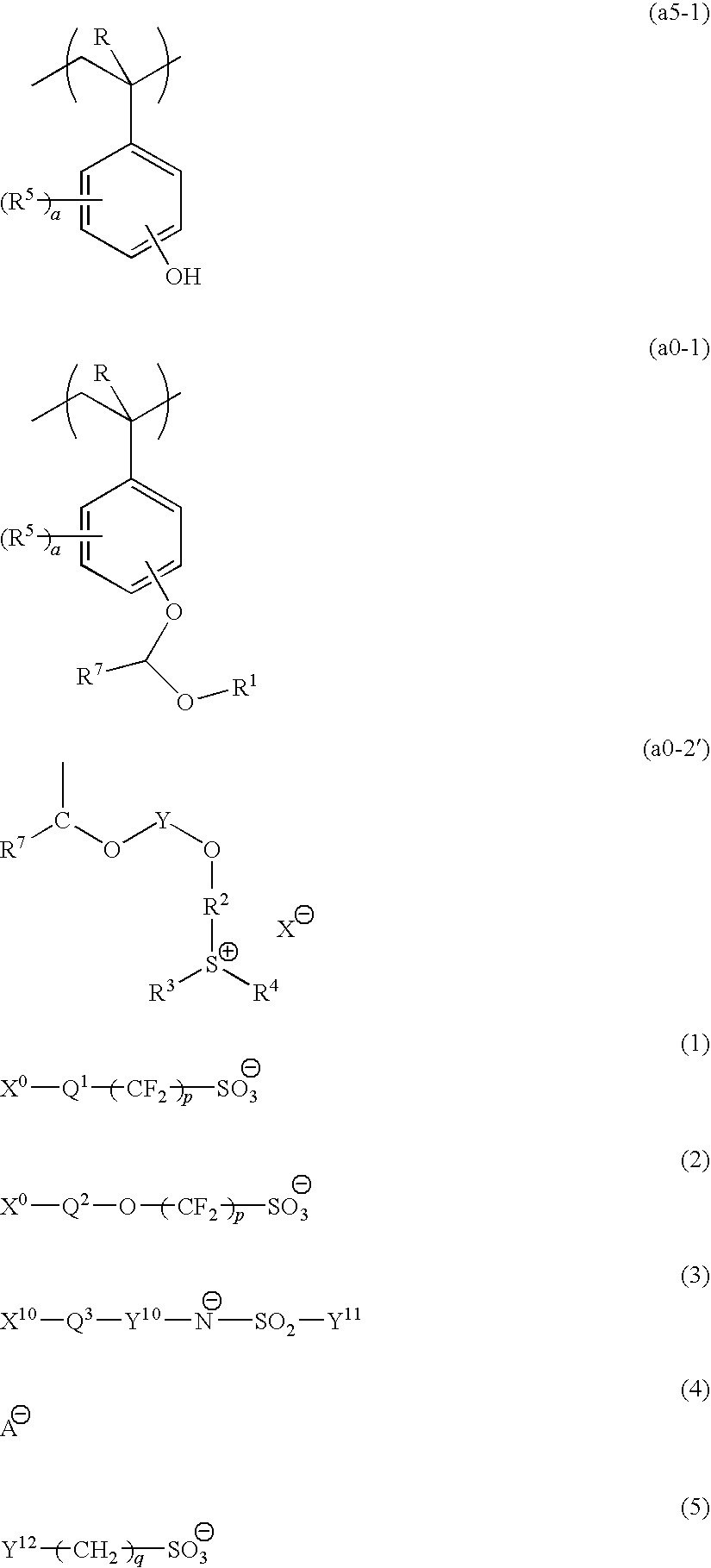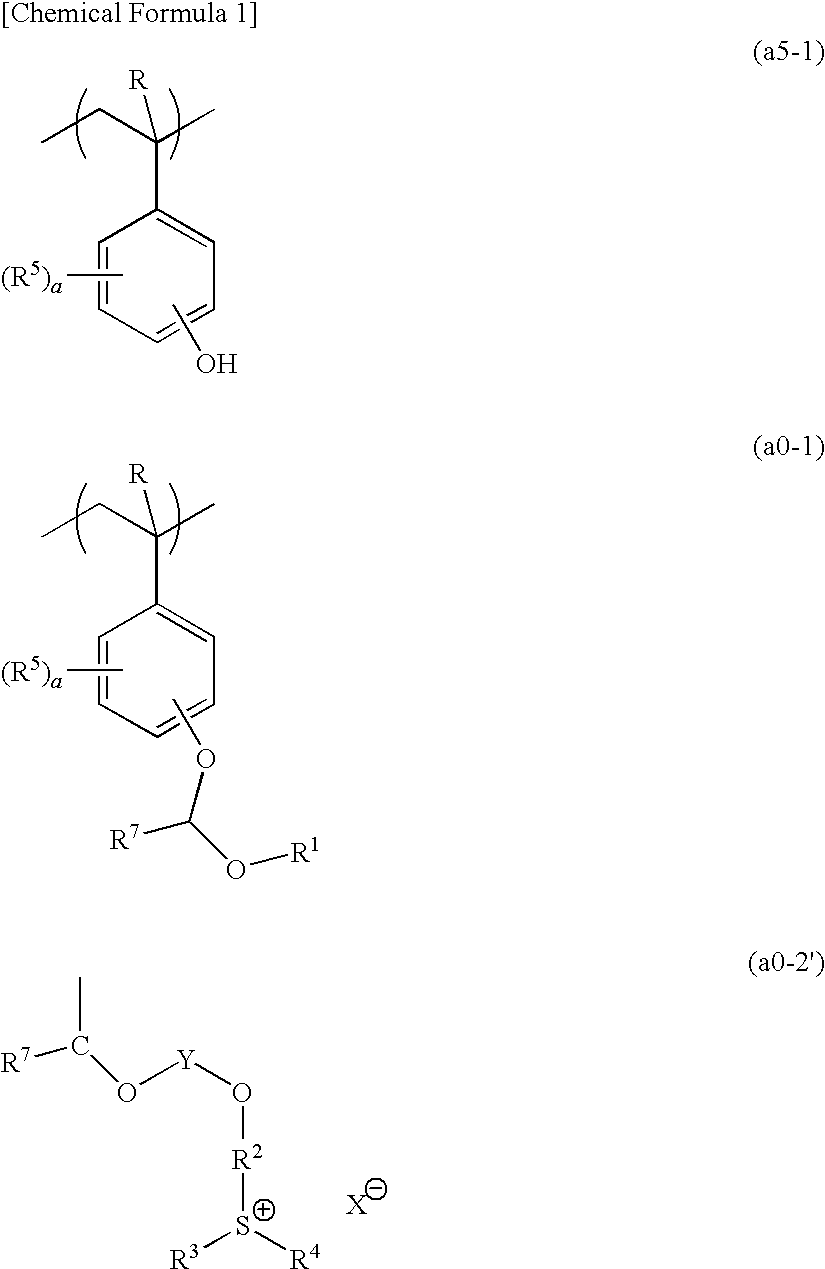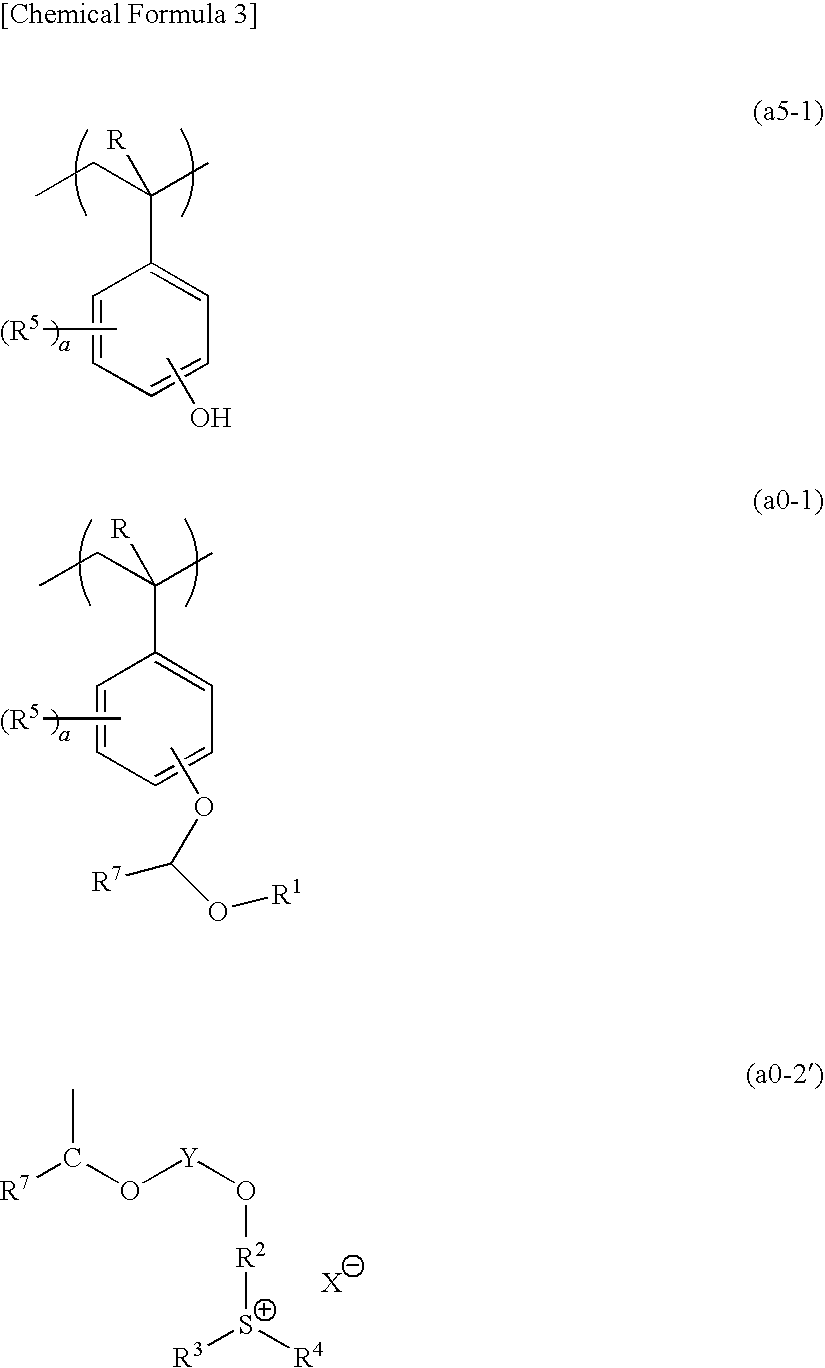Positive resist composition, method of forming resist pattern, and polymeric compound
a technology of resist film and composition, applied in the field of positive resist film composition, method of forming resist pattern, polymeric compound, can solve the problems of contaminating the exposure apparatus, affecting the resolution and pattern shape, and generating outgas, so as to suppress the thickness loss of the resist film, the effect of high sensitivity to the exposure source and inferior effects
- Summary
- Abstract
- Description
- Claims
- Application Information
AI Technical Summary
Benefits of technology
Problems solved by technology
Method used
Image
Examples
synthesis example 1
Synthesis of Compound (A′)
[0879]10.65 g of a compound (A) and 106.46 g of acetonitrile were added to a three-necked flask in a nitrogen atmosphere, followed by stirring. Then, 18.28 g of potassium carbonate was added thereto, and stirring was conducted at room temperature for 10 minutes, followed by dropwise adding 32.1 g of 2-chloroethylvinylether. Subsequently, the temperature of the resultant was elevated to 80° C., and stirring was conducted for 72 hours. The reaction solution was cooled to room temperature, and subjected to filtration. Then, the filtrate was subjected to concentration and drying using a rotary evaporator. The obtained oil product was dissolved in 52.47 g of water, and washed with 52.47 g of hexane three times. Thereafter, extraction was conducted with 159.69 g of dichloromethane, and the organic solvent phase was washed with 52.47 g of water three times. After the washing, the organic solvent phase was concentrated and solidified, thereby obtaining 5.6 g of a c...
synthesis example 2
Synthesis of Compound (B-1)
[0884]150 g of methyl fluorosulfonyl(difluoro)acetate and 375 g of pure water were maintained at 10° C. or lower in an ice bath, and 343.6 g of a 30% by weight aqueous solution of sodium hydroxide was dropwise added thereto. Then, the resultant was refluxed at 100° C. for 3 hours, followed by cooling and neutralizing with a concentrated hydrochloric acid. The resulting solution was dropwise added to 8,888 g of acetone, and the precipitate was collected by filtration and dried, thereby obtaining 184.5 g of a compound (I) in the form of a white solid (purity: 88.9%, yield: 95.5%).
[0885]Subsequently, 562 g of the compound (I) and 562.2 g of acetonitrile were prepared, and 77.4 g of p-toluenesulfonic acid monohydrate was added thereto. The resultant was refluxed at 110° C. for 3 hours. Then, the reaction mixture was filtered, and the filtrate was concentrated and dried to obtain a solid. 900 g of t-butyl methyl ether was added to the obtained solid and stirred...
synthesis example 3
Synthesis of Compound (B-2)
[0896]2 g of the compound (A′) was added to 20 g of dichloromethane and 20 g of water, followed by stirring. Then, 2.54 g of the compound (B-1) was added thereto, followed by stirring for 1 hour. The reaction mixture was subjected to liquid separation, and the resultant was washed four times with 20 g of water. After the washing, the organic solvent phase was concentrated and solidified, thereby obtaining 2.3 g of a compound (B-2).
[0897]The obtained compound (B-2) was analyzed by NMR.
[0898]1H-NMR (DMSO-d6, 400 MHz): δ(ppm)=7.72-7.83 (m, 10H, Ar), 7.72 (s, 2H, Ar), 6.49-6.55 (m, 1H, Vinyl), 4.37-4.44 (t, 2H, CH2), 4.20-4.23 (d, 1H, Vinyl), 4.00-4.26 (m, 7H, CH2+Vinyl), 2.27 (s, 6H, CH3), 1.61-1.98 (m, 15H, Adamantane)
[0899]19F-NMR (DMSO-d6, 376 MHz): δ(ppm)=−106.61
[0900]From the results shown above, it was confirmed that the compound (B-2) had a structure shown below.
PUM
| Property | Measurement | Unit |
|---|---|---|
| wavelengths | aaaaa | aaaaa |
| wavelengths | aaaaa | aaaaa |
| thickness | aaaaa | aaaaa |
Abstract
Description
Claims
Application Information
 Login to View More
Login to View More - R&D
- Intellectual Property
- Life Sciences
- Materials
- Tech Scout
- Unparalleled Data Quality
- Higher Quality Content
- 60% Fewer Hallucinations
Browse by: Latest US Patents, China's latest patents, Technical Efficacy Thesaurus, Application Domain, Technology Topic, Popular Technical Reports.
© 2025 PatSnap. All rights reserved.Legal|Privacy policy|Modern Slavery Act Transparency Statement|Sitemap|About US| Contact US: help@patsnap.com



